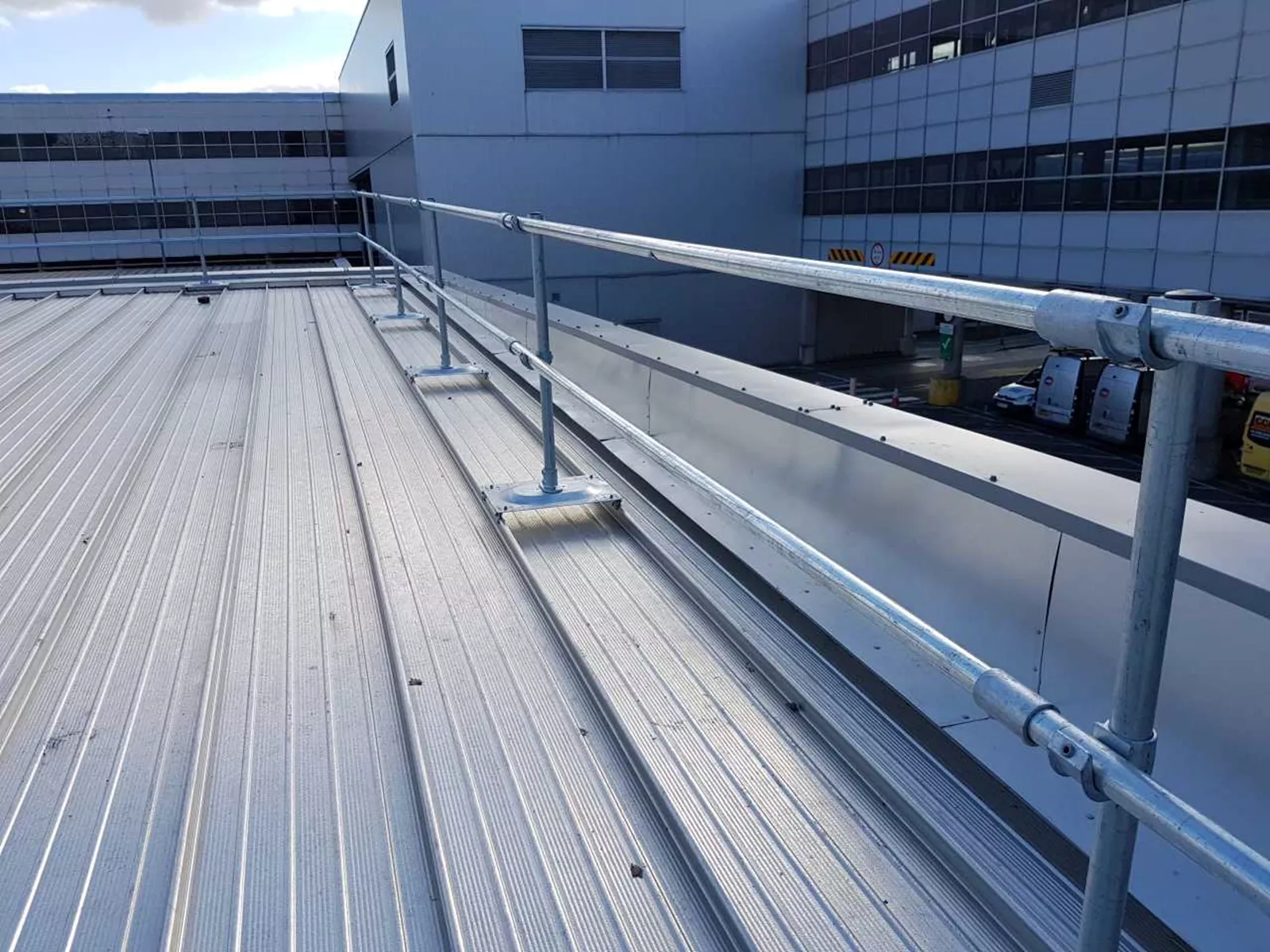Adoption of OSHA-approved State Plans, compliance legislation standards and enforcement policies have been implemented in over twenty-five states, Puerto Rico and the Virgin Islands.
“In 2010, the Bureau of Labor Statistics (BLS) reported that fatal work injuries involving falls decreased 2 percent in 2010 (from 645 in 2009 to 635 in 2010). Overall, fatal falls are down 25 percent from the series high of 847 fatal falls reported in 2007. Since 2007, fatal falls in the private construction industry have decreased by 42 percent. Fatal injuries resulting from being struck by objects or equipment were also lower, down 4 percent in 2010 to 402. " - US Department of Labor – Fall Protection
These statistics directly correlate to Federal efforts to prevent fall accidents through its adopted comprehensive regulatory compliance legislation.
The general principles of fall protection are:
- Stay safe: Remove the hazard or exposure to potential falls.
- Assess risk: Assessing the nature and importance, particularly in the development of the single document risk assessment professionals, to identify actions to ensure the safety and health of workers.
- Combat the risks at source: Integrating prevention as early as possible, from the design of equipment, procedures and workplace.
- Adapt work to man: Design posts, choosing equipment, work methods and production to reduce the effects of work on health.
- Consider the state of technological developments: Provide day to implement preventive measures in line with the technical and organizational developments.
- Replace the dangerous by what is not or what is less so: Avoid the use of hazardous processes or when the same can be achieved with a method with less danger.
- Prevention planning: Integrate into a coherent technology, work organization, working conditions, social relationships and environment.
- Take collective protection measures: Use protective equipment only as a complement to collective protection or default protection effective collective.
- Give appropriate instructions to workers: Give employees the information needed to perform their tasks in optimal safety conditions. This includes providing them with the necessary elements for understanding the risks involved and so their involvement in the prevention process.
Regulatory Compliance Legislation References
OSHA Requirements
Note: Twenty-five states, Puerto Rico and the Virgin Islands have OSHA-approved State Plans and have adopted their own compliance legislation standards and enforcement policies. For the most part, these States adopt standards that are identical to Federal OSHA. However, some States have adopted different standards applicable to this topic or may have different enforcement policies. General Industry (29 CFR 1910)
National Regulatory Consensus
Note: The following are NOT OSHA compliance legislation regulations. However, they do provide guidance from their originating organizations related to worker protection. American National Standards Institute (ANSI)
- A1264.1-2007, Safety Requirements for Workplace Walking/Working Surfaces and Their Access; Workplace Floor, Wall and Roof Openings; Stairs and Guardrail Systems. Sets forth safety requirements for areas where danger exists of persons or objects falling through floor or wall openings, platforms, runways, ramps, and fixed stairs, in normal, temporary, and emergency conditions. This standard applies to industrial and workplace situations and is not intended to apply to construction, residential, or commercial occupancies except where necessary maintenance or work station access may be required.
- A10.32-2004, Fall Protection Systems for Construction and Demolitions Operations. Establishes performance criteria for personal fall protection equipment and systems in construction and demolition and provides guidelines, recommendations for their use and inspection.
- ANSI/IWCA 1-14.1-2001, Window Cleaning Safety. International Window Cleaning Association (IWCA). Serves as a guide for window cleaners, regulatory agencies, manufacturers, architects, consultants, designers and building owners. Part A focuses on safety guidelines for the use of window cleaning access equipment. Part B is geared toward those who manufacture, distribute, design, install or maintain the equipment.
- Z359.1-1992 (R1999), Safety Requirements for Personal Fall Arrest Systems, Subsystems and Component. Establishes requirements for the performance, design, marking, qualification, instruction, training, inspection, use, maintenance, and removal from service of connectors, full body harnesses, lanyards, energy absorbers, anchorage connectors, fall arresters, vertical lifelines, and self-retracting lanyards comprising personal fall arrest systems for users within the capacity range of 130 to 310 pounds (59 to 140 kg).
Other Regulatory Compliance Legislation Resources
- Construction - Pocket Guide. OSHA Publication 3252-05N, (2005). Also available as a 285 KB PDF, 36 pages. Reports that nearly 6.5 million people work at approximately 252,000 construction sites across the nation on any given day. The fatal injury rate for the construction industry is higher than the national average in this category for all industries.
Fall Protection: Frequently Asked Questions (FAQ). University of Virginia, Environmental Health & Safety. Provides questions and answers on fall safety issues.
